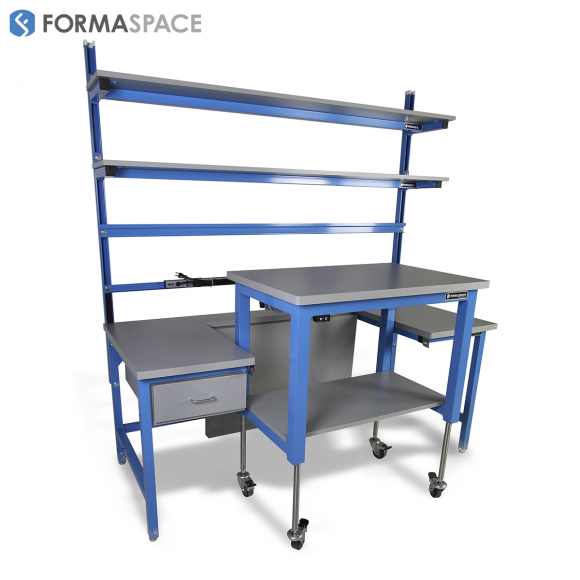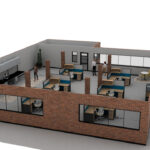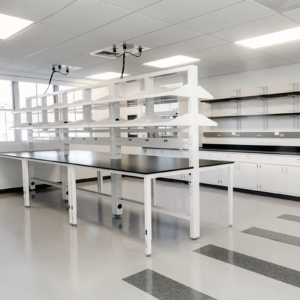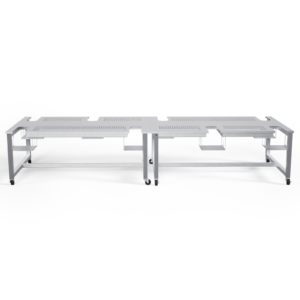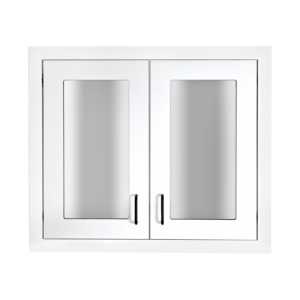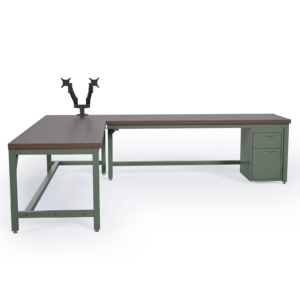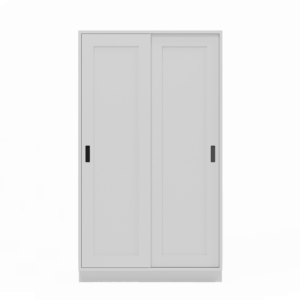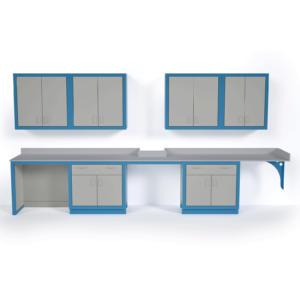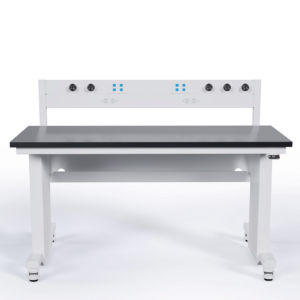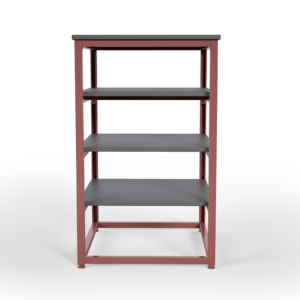Phenolic Tops versus Epoxy Tops
You may have questions about the differences between phenolic and epoxy resin tops.
Don’t worry; it’s easy to confuse the two.
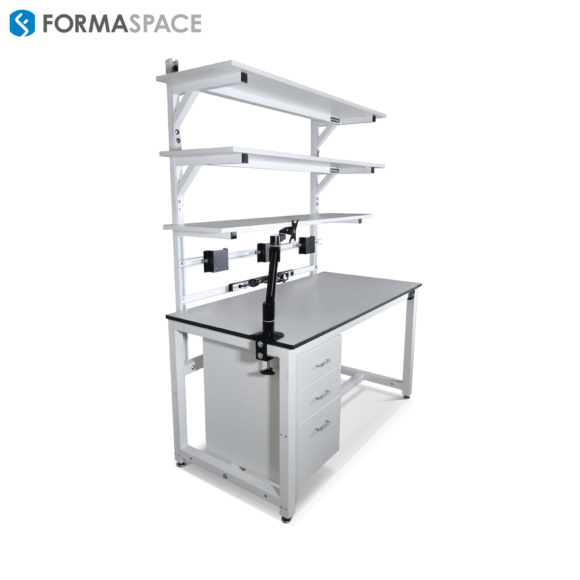
Both materials are exceptionally strong and very durable — and they are used in many of the same applications, including industrial processing labs, agriculture, water treatment facilities, photography labs, R&D and testing laboratories, as well as pharmaceutical and health care lab applications, such as radiology, microbiology, biochemical, hematology, and urology.
So what’s the difference?
Let’s start with the manufacturing process.
As the name implies, Epoxy Resin tops are manufactured using a proprietary mixture of modified epoxy resin and non-asbestos inert fillers (up to 10% post-consumer, e.g. recycled, glass filler.) The mixture is cast in sheets and cured using a thermoset process to achieve the enhanced physical and chemical resistance required in medium to heavy-duty laboratory environments.
The process for creating phenolic resin countertops is different. Thermosetting resins are reinforced with cellulose fibers then cured under high pressure. This makes phenolic resin one of our most durable work surfaces, making them suitable for heavy-duty applications in laboratory and manufacturing settings, as well as applications where moisture resistance is important – in healthcare, for example.
Detailed Comparison of Phenolic Tops versus Epoxy Tops
Let’s dive into the details.
| Product Comparison | Color Core Phenolic Resin | SPC (Solid Phenolic Compact) | Epoxy Resin Countertops |
| Application Use | Moderate to Heavy Duty | Moderate to Heavy Duty | Heavy Duty |
| Base Material | Cellulose & Resin | Cellulose & Resin | Silica & Resin |
| Chemical Resistance | Good | Good | Good |
| Class A Fire Rating | Good | Not Recommended | Good |
| Heat Resistance | Good (up to 350 F) | Good (up to 350 F) | Best |
| Moisture Resistance | Good | Good | Best |
| Bacteria Resistance | Good | Good | Good |
| Impact Resistance | Good | Good | Best |
| UV Light Resistance | Best | Good | Good |
| Design Appeal | Best | Black Core Visible | Best |
| Material Weight | Best | Best | Fair |
| Workability (Hole Drilling) |
Best | Best | Fair |
| Availability (Lead Time) | 2 – 4 weeks | 1 – 3 weeks | Minimum 4 weeks and up |
| Cost | $$$ | $$ | $$$$ |
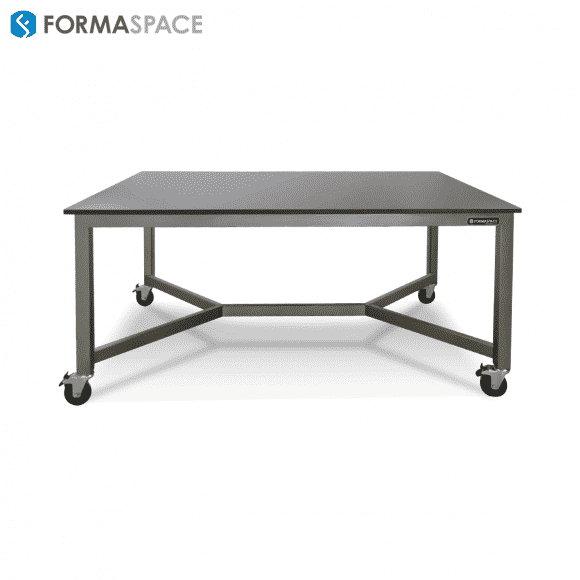
Formaspace offers several types of phenolic tops, including Color Core Phenolic and SPC (Solid Phenolic Compact). Among the phenolic resin materials, these two are the most suitable for use in laboratories and other heavy-duty applications because they offer the greatest resistance to chemical spills.
Let’s see how Color Core Phenolic and SPC (Solid Phenolic Compact) compare with Epoxy Resin. All three of these materials offer good chemical resistance, heat resistance, moisture resistance, impact and scratch resistance, as well as UV light resistance.

| Materials | Chemical Resistance | Heat & Fire Resistance | Moisture Resistance | Impact & Scratch | Lab Durability |
| Color Core Phenolic | ✓ | ✓ | ✓ | ✓ | ✓ |
| SPC | ✓ | – | ✓ | ✓ | ✓ |
When it comes to applications that require a Class A Fire Ratings, both Epoxy Resin and Color Core Phenolic are recommended choices.
And when it comes to aesthetics, Color Core Phenolic and Epoxy Resin also have the most attractive edge designs. As the name implies, the color of the Color Core Phenolic product extends all the way to through the material. This is in contrast to SPC (Solid Phenolic Compact), which has a solid black core that’s visible at the edges of the work surface.
Both of our phenolic resin materials are also significantly lighter (at only 7.4 pounds per square foot) than epoxy countertops, which allows for easier installation and reduced dead weight. And, if you need to make modifications to your installation, phenolic countertops are easier to cut and drill into — this is not the case with epoxy countertops, which require heavy-duty tools to trim or cut holes.
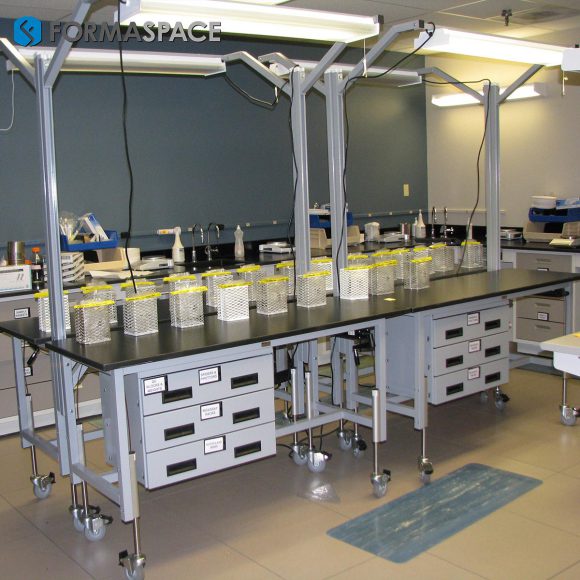
Cost and availability is another issue. Phenolic countertops are around 25% cheaper than comparable epoxy countertop materials, and the lead times are much quicker as well – only one to three weeks. Due to recent market condition changes, epoxy countertop materials are now significantly more expensive, and the lead times have jumped to a minimum of one month — at the wait time could be significantly longer in some cases, depending on your specific order.
The Bottom Line
So which product is best, phenolic resin or epoxy resin?
More and more customers are specifying phenolic resin for their laboratory installations because it offers comparable performance to epoxy resin at a significantly lower cost with much quicker delivery times.
Phenolic Countertop Applications for Laboratories and Other Heavy-Duty Uses
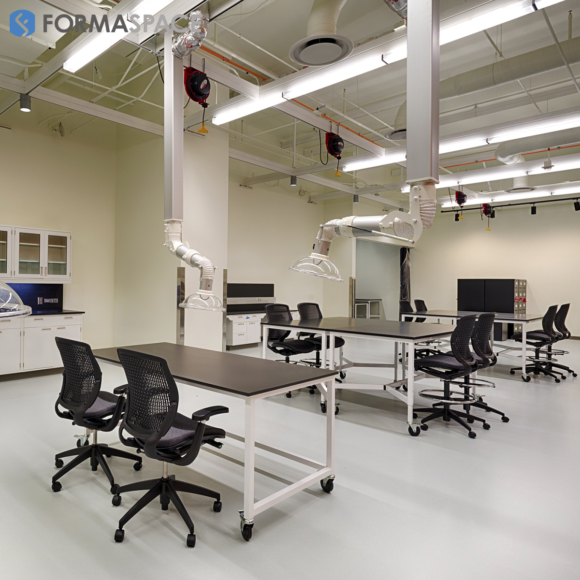
Phenolic resin is extremely durable – which makes it a good choice for heavy-duty laboratory use as well as in industrial, manufacturing, and healthcare applications.
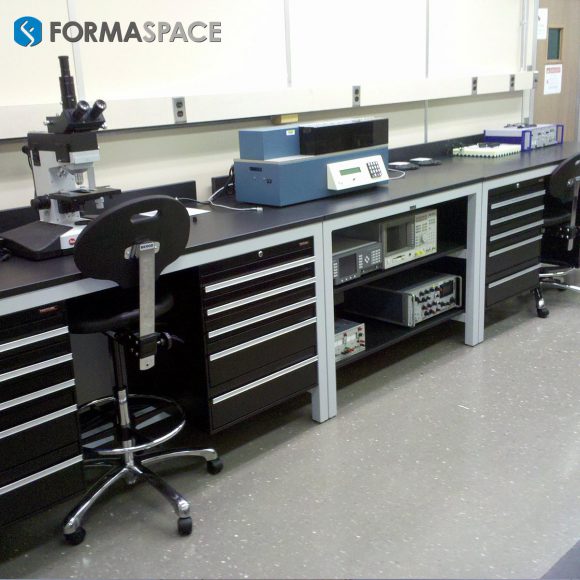
Phenolic resin is also highly resistant to both bacteria growth and moisture; that’s why it’s often specified for laboratory applications as well as use in pharmaceutical and healthcare settings (including radiology, microbiology, biochemical, hematology, and urology labs),
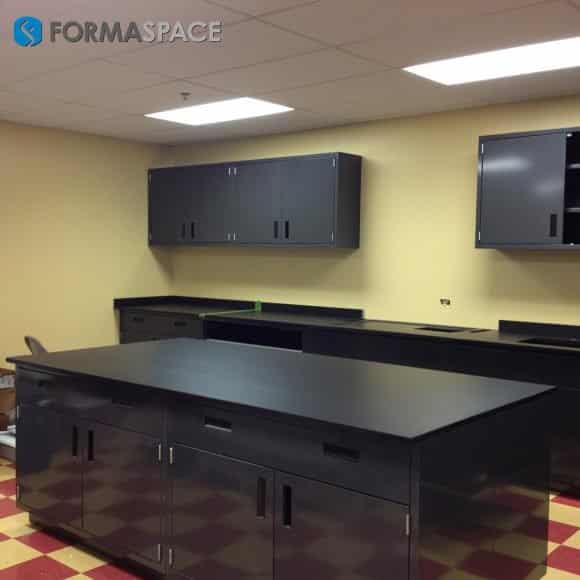
Other ideal applications for phenolic resin countertops include agriculture labs, water treatment facilities, photography labs, R&D and sample testing laboratories that do not handle highly corrosive materials, carbon-based samples, or high-temperature samples.
Best Practices for Keeping Your Phenolic Tops Looking Like New
With proper care, phenolic resin countertops can provide years and years of service.
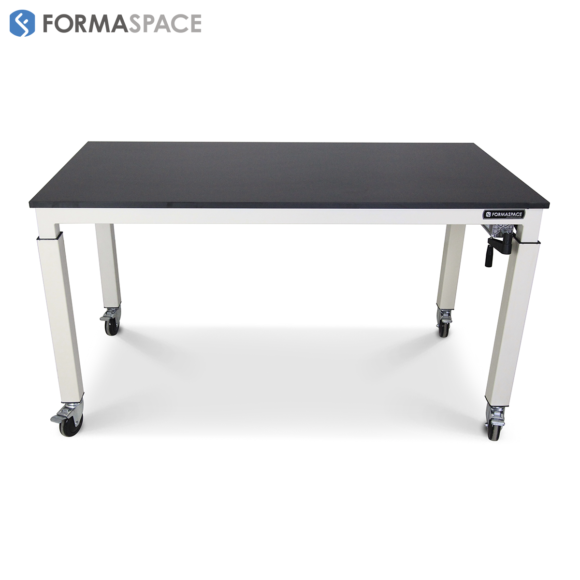
They’ll stay looking like new if you take some simple precautions, such as doing regular cleaning maintenance — as well as cleaning up accidental spills immediately.
Here are some tips on how to clean your phenolic resin countertops.
- Wipe up any spills immediately with a soft cloth or paper towels.
- Use a soft cloth to clean the surfaces daily. Use a gentle cleaning agent, such as Simple Green. Buff the surfaces dry to avoid water spotting using a soft chamois or cloth.
- If you want to restore the shine, apply a small amount of Murphy’s Oil (or similar mineral or finishing oil) to a soft rag and shine the surface. Buff for a gloss finish using a chamois cloth.
- If you need to remove surface imperfections caused by dragging metal objects across the surface, you can scrub the marred areas with a soft cloth dipped in a gentle soap and water solution.
- For heavier damage to the surface, use a light-duty Scotchbrite Pad soaked in an acetone solution (wear gloves) to rub out the surface. Steam cleaning is another alternative for removing stains from organic compounds.
- Tougher stains can be treated by applying a detergent / water mix and letting it soak in place overnight. If needed, use a light abrasive cleaner or gentle scouring pads to carefully buff out tougher stains (try in a hidden place first). Don’t overdo it as you could damage the surface.
- Built-up residues such as wax or paraffin can be removed with a plastic or wooden spatula. Then follow the instructions above to restore the surface shine.
What Not to Do
Try to avoid doing these things which could damage the appearance of your phenolic resin countertops:
- Avoid contact with sharp objects, hard metal tools, and abrasives.
- Do not use abrasive cleaning tools (steel wool, hard brushes) or harsh cleansers including cleaners with abrasive ingredients (baking soda, Comet), bleach solutions, tub and tile cleaners, or oven cleaners.
- Do not apply wax or cleaning materials that contain wax.
- Avoid thermal shock. Do not put liquid nitrogen or dry ice directly into sinks or on countertops. Don’t put hot items on the surface either.
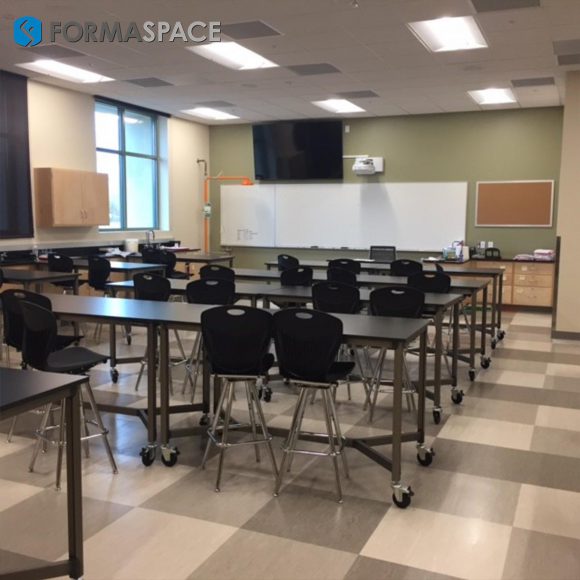
Formaspace is Your Laboratory Partner
We are here to help.
Our client roster includes major manufacturers (such as Boeing, Dell Computer, Schlumberger, and Toyota) as well as leading healthcare and pharma customers (including Medtronic, Roche, and Antech Diagnostics).
And our Formaspace Design Consultants have lots of hands-on experience helping customers select the most appropriate work surface material for any given situation.
Remember, if you can imagine it, we can build it – here at our factory headquarters in Austin, Texas.
Our furniture solutions are backed by our no-questions-asked 12-year guarantee, which keeps you covered—even if your furniture is used by 3 different shifts working around the clock.
Now is the time to speak with one of our Formaspace Design Consultants.
They are ready to answer your questions and share our experience based on thousands of successful installations of our complete line of technical furniture for laboratory facilities, industrial applications, and more.
Make the call today. You’ll be glad you did.


